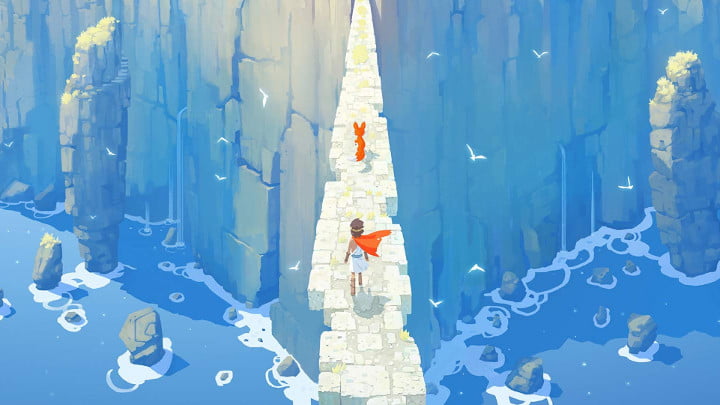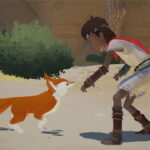Tequila Works stumbled out of the gate when it announced Rime back in 2013.
After its reveal trailer, it was compared to giants like The Wind Waker and ICO – flattering but weighty comparisons for a team of around twenty people working in Madrid. After publisher Grey Box got involved, it shifted from a PlayStation exclusive and was re-announced as multiplatform. Here in 2017, Rime is ready to launch later this month, and it’s settled into a rhythm all its own.
The first thing that strikes you like sea spray is Rime’s art. Its effulgent light and open space refuse confines; its vivid colours and curving vistas allow for soft curation. The team at Tequila Works has drawn inspiration from Spanish landscape painter Joaquin Sorolla, and it shows. Azure waters lap against slick, worn rocks; cataracts of foam scrub the sand as crabs scuttle from the waters to the shade. Just like a Sorolla, the sunlight is brilliant, imbuing detail and memory into each wind-blasted rock face. You’ll go where your instinct takes you, and Rime’s non-linear approach allows the designers to gently carry you here and there like flotsam.
Playing Rime feels pleasing. Lead animator Sandy Christensen worked at LucasArts and Pixar before joining Tequila Works, and she has lent Rime’s hero – a shipwrecked adolescent boy – the kind of graceful clumsiness befitting an adventurer so young. Cresting hills and bounding down craggy slopes teases out shuddering, flailing limbs – his movements lacking precision, overflowing with raw vigour. It conjures the same feeling of touch and urgency felt when, in ICO, you would yank Yorda’s arm as you hurried, feeling her delicate weight shifting in step with you.
It’s the sort of contemplative, peaceful game that’s a pleasure to simply inhabit – that’s rare. Your exploration does invite challenge, though, and it’s here that it takes on another influence – The Witness. Jonathan Blow’s opus fused puzzles and landscape, glass and metal blending and clashing with rock and earth. Rime is more natural. Perspective, sound, and light cohere to melt the game’s puzzles into its sun-dappled setting.
There’s a keyhole-shaped visual motif that permeates the panorama. Statues and archways bear the reoccurring shape, and it falls to you to intuit what must be done. The young boy can hum softly to himself and shout, his yelps resonating with jade statues that populate the environments. They alter the environment, your through line straying into caves and man-made structures, shifting stone and manipulating the island.
Rime’s music was changed since that first trailer: it’s now been improvised and recorded by David Garcia, and it has the same dynamic quality as Austin Wintory’s work with Journey and ABZÛ. It doesn’t come across as manipulative or overbearing; instead, it subtly frames what you’re doing, from the surging, muffled strings of being submerged in water, to the plucky plodding of methodical island exploration. It sets a tranquil mood, conveying a sense of freedom tinged with melancholy.
What’s impressive is how you feel unencumbered: if you want to pursue a puzzle and open a door then you can tug at that thread, but at the same time, I spent most of my time just seeing what I could see. I traced the shoreline, swam in coves, and explored the ruins of a coliseum-like structure. Usually, even in flat-out open-world games, I’m nagged at by a sense of obligation. Not with Rime.
Its story is enigmatic and sparse, and I won’t touch on that here; suffice to say, its landscape rewards exploration with clues to its unfurling mystery. Perhaps more meaningful than that though, it offers up rewards in the exploring itself. Rime is a game that reflects a vibrant clutch of influences, so it’s perhaps all the more potent that there is not just beauty, but uniqueness in its execution.












